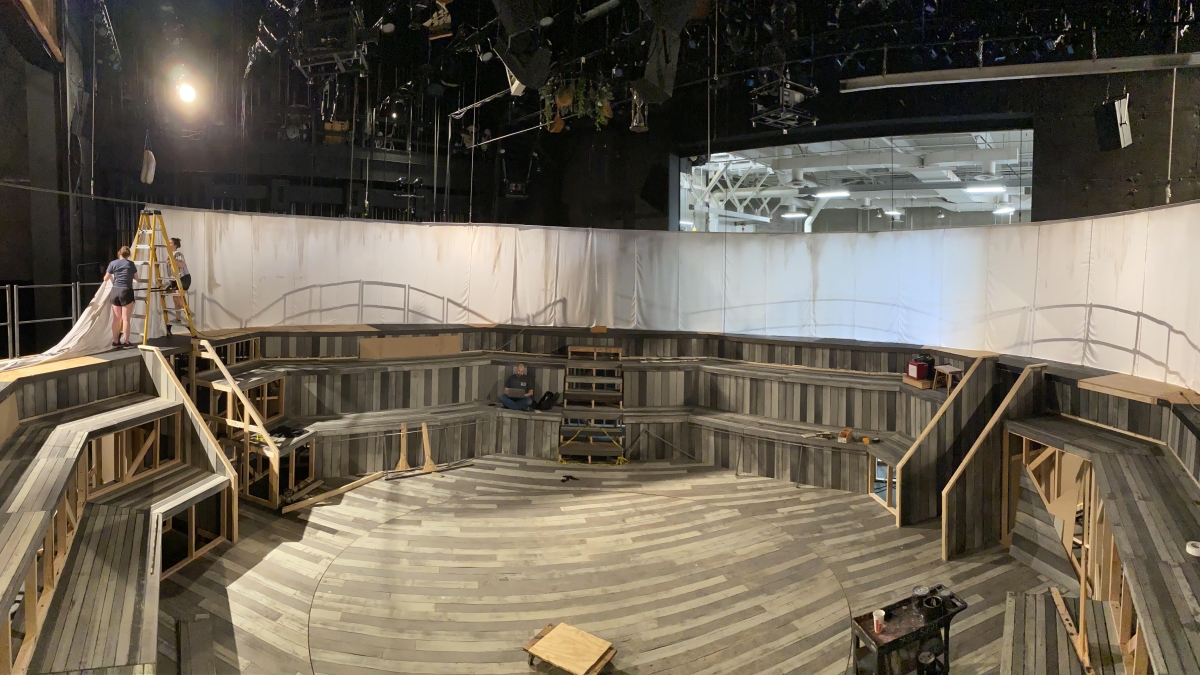What the audience didn’t see: Lessons learned from a canceled play

The cast and crew of “The Crucible” worked on sets, rehearsed and more for a production that was canceled due to COVID-19. Photo courtesy of the School of Music, Dance and Theatre production team
A play is more than what you see on stage. It’s casting and rehearsals, staging and building sets. It’s developing and learning choreography. It’s figuring out the lighting and any multimedia components. It’s designing and making costumes. It’s researching. A play is not just the final product that the audience sees — it’s all the work and the process behind putting on the production.
Each year, faculty, staff and students in the theater program at Arizona State University put in this work together to produce a handful of plays as part of the Herberger Institute for Design and the Arts' performing arts offerings. These productions allow students — from acting majors and design and production students, to others who are interested in participating in theater — the chance to put their education to practice.
The 2019–20 season included a spring production of “The Crucible.” It was set to run after spring break. Opening night was sold out. But the show never made it to the stage — COVID-19 forced the cancellation of the planned performances.
“The first part was coming to acceptance and then just letting go and treasuring what we gained from it,” said Briyannah Simmons, a theater student and crew member for the show.
No one will see the production. Audiences will not have the chance to appreciate and applaud the efforts of the cast and crew. But the work they did is not lost and is still worthy of celebration.
“The beautiful thing about theater and performance that I’ve always loved is that it has a conception, a birth, a life and a death, so we go through an entire life cycle every three to seven weeks, and this was another one. And its life cycle was cut short unfortunately,” said Cari Koch, production stage manager and clinical associate professor. “We still did a lot of work to put it forward, and I hope that we all hold dear the lessons that we learned in this process and get to apply it again in the next show because there’s always, thankfully, another show in another way in another place in another time.”
In this video, the cast and crew of “The Crucible” share what working on the play meant to them and what they will keep with them.
More Arts, humanities and education

Honoring innovative practices, impact in the field of American Indian studies
American Indian Studies at Arizona State University will host a panel event to celebrate the release of “From the Skin,” a…

ASU alum's humanities background led to fulfilling job with the governor's office
As a student, Arizona State University alumna Sambo Dul was a triple major in Spanish, political science and economics. After…

ASU English professor directs new Native play 'Antíkoni'
Over the last three years, Madeline Sayet toured the United States to tell her story in the autobiographical solo-…